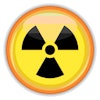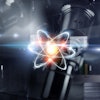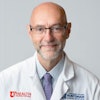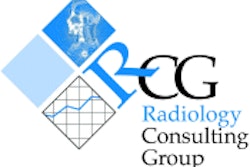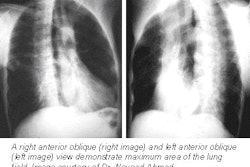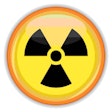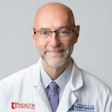What's the most stressful part of many radiologists’ jobs? Being on-call. For many imaging professionals, the hospital emergency room is quickly becoming Ground Zero, because it's there that problems plaguing radiologists have reached a critical mass.
The troubles include sleep deprivation, physician shortages, increasing utilization, an aging population, and diminishing reimbursement. We're seeing increasing numbers of uninsured, more demanding consumers, escalating deployment of new technology, and finally, an out-of-control legal system that fosters a "cover-your-back" mentality in the ER.
The January/February issue of Health Affairs, a well-respected policy journal, calculated that the U.S. will have a shortage of 50,000 physicians by 2010. This number could grow to 200,000 by 2020 if current trends continue. Meanwhile, Medicare predicts that radiology utilization for its client base will increase 140% over the next decade, as an aging population requires increasing levels of care.
Utilization in the emergency room has been increasing anywhere from 7%-20% every two years, depending on which studies you look at. The American College of Radiology’s Task Force on Human Resources has found that workload growth is increasing 6% a year based on relative value units (RVUs), while the number of radiologists is rising by only 2%.
Some 51% of radiologists responded that they in fact had too much work. The statistics clearly demonstrate that a crisis is already upon us, and will only grow worse with each passing year.
There was a time when on-call radiologists could expect to sleep undisturbed through the night; now they must deal with 6-10 studies. This precludes even a fiction of adequate sleep, even as numerous studies show that sleep deprivation leads to more medical errors.
More on-call time
The shortage of radiologists also means more nights on-call. The growing array of sophisticated technology means not just more cases to read after hours, but more images. Multislice CT scanners now serve up some studies with up to 1,000 images to review through sleep-weary eyes in the middle of the night. Ironically, the increasing workload actually results in less income for some groups, since many emergency rooms serve as outpatient clinics for growing numbers of uninsured patients.
There is also the unknown impact of the new ACR Standard of Care, which requires the contemporaneous reading of all imaging studies done in the ER. How many groups can possibly meet that standard?
Sophisticated consumers are now also expecting "FedEx" care, demanding that their workup be completed in the middle of the night rather than waiting until the morning.
And even when these obstacles can be overcome, radiologists and ER physicians still face a hostile legal system that finds even unavoidable medical errors fodder for multimillion-dollar settlements. The situation further pressures physicians to order additional studies to cover their backs.
Of course, each new imaging study also poses additional questions, quandaries, and perhaps even conflicts. If I only do all after-hours cases without contrast, does that increase my liability risk? What creative solutions are out there for after-hours coverage, such as internal/external nighthawks? Are poorly trained trauma/ER physicians stealing ultrasound cases from radiologists -- or are they actually providing faster and better patient care? What happens if I can't meet the ACR standard for readings in the ER?
And most important: How can radiologists balance these increasing demands, rising stress, and insidious turf intrusions, while at the very same time providing the highest quality patient care?
Education is the answer
I believe there can ultimately be only one answer, one response, and one solution: a personal lifelong dedication to high-quality education. A confident, well-educated radiologist is the best antidote to the current crisis.
Granted, education won't solve all of our problems, but it can help diminish many of them. If you know how to read a CT of an acute abdomen so well that you can do it backwards and forwards in your sleep, then sleep deprivation has less of an impact than if you already struggle with them even when you're well rested.
The greatest stress-buster I know of, especially when faced with complex decisions and agitated referring clinicians, is unshakeable confidence and depth of knowledge. Radiologists who are experts in their field are also more productive in their area of expertise than those who are not.
And if you are, without a doubt, the best person you know of to read these studies, then the knowledge is not only your best defense to turf intrusions, but also your best argument for improved reimbursements. Finally, I know of no better defense in a malpractice case than having made the right decision, even if the outcome was unexpected.
As part of an ongoing effort to assess the impact of recent changes on radiology professionals, the American Society of Emergency Radiology is conducting a Web-based survey to canvas private-practice radiologists on their individual needs. To participate, just click here. The ASER will use the results to tailor its educational efforts to help radiologists cope with the growing demands being placed on them.
By Dr. Eric Trefelner
AuntMinnie.com contributing writer
February 21, 2002
Dr. Trefelner is chairman of the committee on community radiology at the American Society of Emergency Radiology.
Copyright © 2002 AuntMinnie.com
